How to Stop a Boat from Flooding
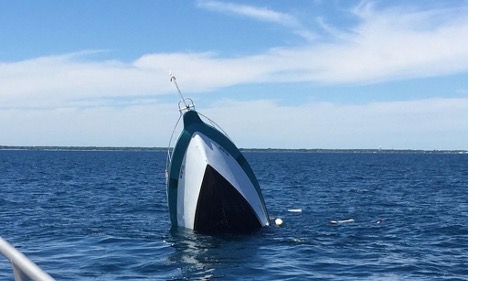
When it comes to stopping a boat from flooding, it pays to have the right tools on board. An old raincoat sleeve, wood wedges, duct tape and even a wax toilet bowl ring can go a long way to save the day when disaster strikes.
A few years ago, while idling a powerboat in a no-wake zone in Florida, the driver opened the engine hatch to see water filling the bilge. The drive had loosened, breaking the watertight seal on the transom and it had the potential to become a critical situation.
Within moments, the driver and his co-pilot took off their shirts and socks to fill the small gap and slow the leak to a trickle. At the same time, the co-pilot started looking for nearby sandbars if the stopgap measure didn’t work.
Thankfully the duo got the boat back on the trailer after calling a friend who had the trailer waiting at a nearby launch ramp.
Calm Assessment
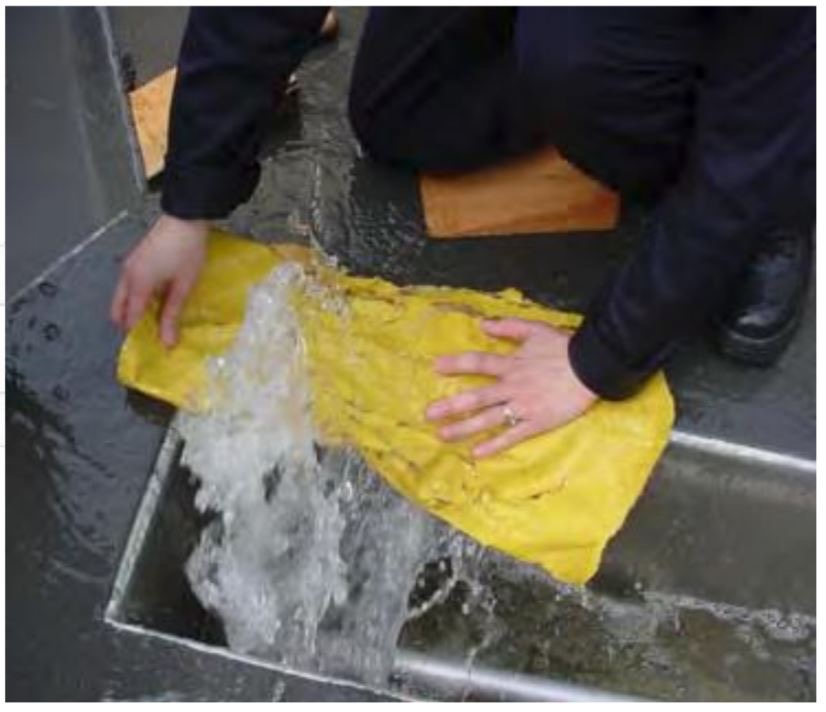
When the experienced driver discovered water rushing into the engine compartment, he calmly but quickly assessed the situation. Because the water level was still low, he could see the leak around the gimbal housing.
The driver also knew time was of the essence. While the incident occurred in Florida’s Sarasota Bay, the boat was still far from shore and there was no guarantee the drive would stay attached to the hull. In essence, the driver was making a risk assessment because:
- The volume of water that enters a boat is proportional to the square root of the depth of the hole and the square of the hole’s radius
- A 2-inch (5.08 cm) hole that is 1-foot (0.3 m) below the waterline can fill a 55-gallon (208 L) drum in 42.4 seconds
- Each gallon of saltwater weighs approximately 8.5 lbs. (3.85 kg)
Sinking Feeling
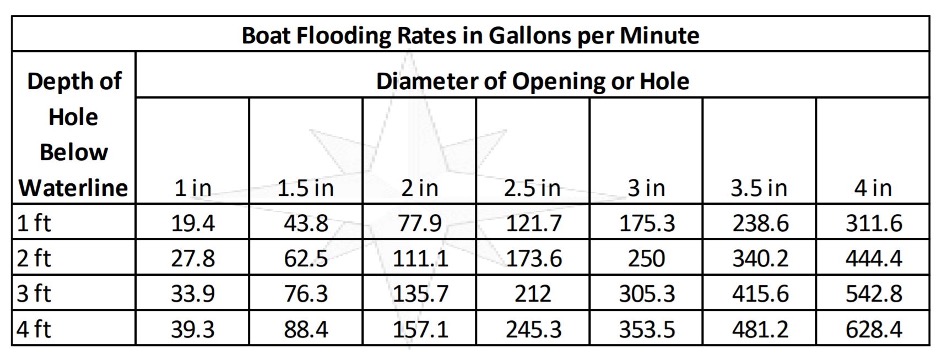
The immediate goal for any boater is to stop the flooding and then try to clear as much water inside the boat to remove the added weight. Until a boater has experienced flooding on a boat, they don’t realize how quickly a vessel can fill with water.
Take a 3-inch (7.6 cm) gash that is just 1' (0.3 m) below the waterline can fill 175 gallons of water in just one minute.
Consider these surprising facts:
- A 1” (2.54 cm) hole that is 2' (0.61 m) below the waterline is forcing your boat’s weight to increase at 240 lbs. (108.86 kg) per minute or 4 lbs. (1.8 kg) per second.
- As the boat fills with water the effective hole depth increases, forcing faster water ingress.
- A 1,600 GPH bilge pump in perfect conditions can remove 26.7 gallons (101 L) per minute.
Be Prepared
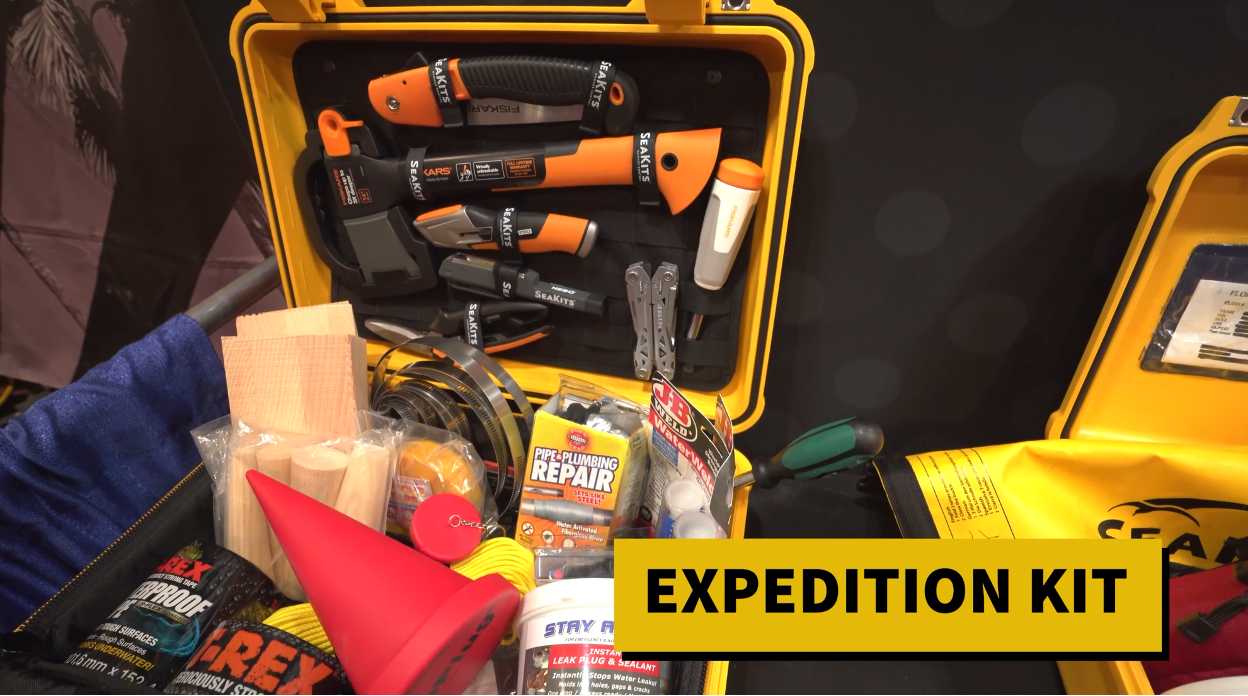
When flooding happens, make sure you and anyone on board are wearing their life jackets. Time is limited and the crude tools needed to stop the flooding should be readily available.
Anything on board is fair game when stopping a leak. Sheets, pillow cushions, a toilet plunger and even shirts can slow the water incursion enough to allow the bilge pumps to stay ahead of the incoming water flow. But, why not do what the pros do and have a SeaKits Expedition Kit on board. In most cases, everything you need to stem the flow will be right there ready to use.
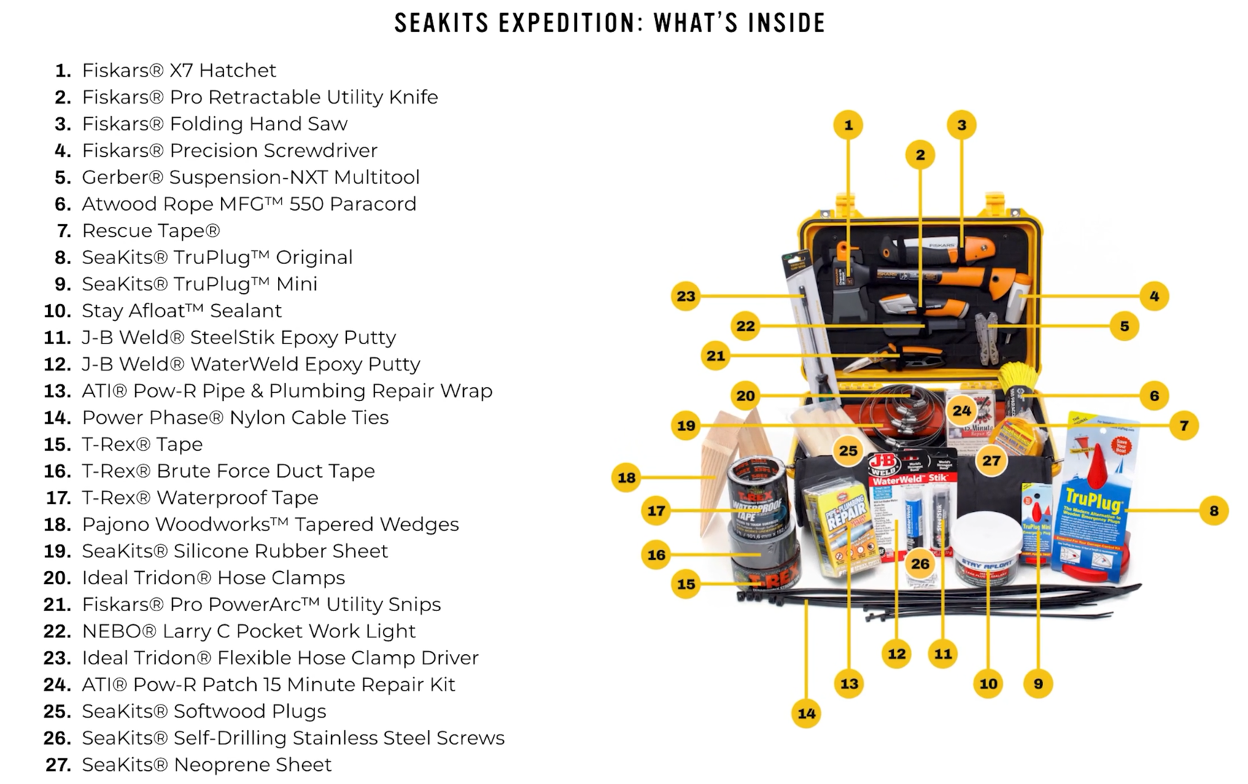
To find out more about SeaKits and to order one, click here…